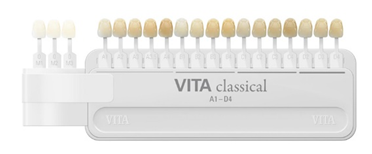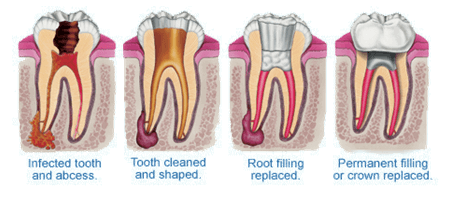Restorative Treatments
Tooth coloured restorations
Natural looking tooth-coloured fillings, or ‘white’ fillings, are also known as ‘composite’ fillings and are made from very strong bonding material that can be shaped to the exact requirements of your tooth. This material is set using a special light source that cures the filling material. Natural white fillings are now the most common cosmetic dental procedure. They are an ideal replacement for old black or silver amalgam fillings and will last just as long with none of the potential side effects amalgam fillings are now known for.
Dental composite fillings can be used for filling new cavities, replacing metal or amalgam fillings, repairing chipped teeth and also can help to remove gaps between teeth, with the end result beingto brighten and enhance your smile. Nowadays we have available a wide range of shades that we can tailor to match the shade of your dentition.

Bridges
A dental bridge is used to replace a gap in the mouth from where a tooth or teeth have been removed. The ability to have a bridge depends on:
- The size of the gap
- The position of the gap
- The quality of the teeth that will hold a bridge in place
Bridges are an alternative to implants and dentures and offer a fixed solution.
Maryland Bridge
This type of bridge can be used as temporary measure where the bridge is restoring the gap until an implant can be placed. The Maryland bridge can also be used as a more permanent measure when replacing a single tooth.
Fixed Bridge
This type of bridge can be made from a variety of materials depending on the length of the bridge and its functional needs.It is a fixed solution and on average this type of bridge lasts between 7-15 years.
Dentures
There is absolutely no reason why people that wear dentures shouldn’t have the opportunity to have a beautiful natural smile. Dentures can be made from a choice of Acrylic, Cobalt chrome or Velplast. Dentures are a favourable option from a financial and a non-surgical advantage to other treatment options.
There are approximately five to six stages involved in making a cosmetic and functional denture and the process lasts approximately eight to twelve weeks. Dentures should be replaced approximately every ten years because the supporting gum and bone will change shape over this time. For wearing ill- fitting dentures is proven to cause accelerated deterioration of bone support in the mouth.
Appearance of teeth
Teeth comprising the denture are chosen according to shape, colour, facial aesthetics and individual preferences which are taken into account. At our practice your preference and decision is of paramount importance in the selection of teeth and their suitability to your facial aesthetics.
We use very natural looking acrylic teeth for our dentures so that they will mimic actual teeth. There is an opportunity as part of the denture process to preview the teeth in your mouth before the denture is finalised.
Appearance of Gums
Colours of gums vary amongst people and amongst people of different racial background. However, we ensure that the gum colour is also correct so that when you smile no one will know that a denture is being worn.
Crowns
Dental crowns are designed to cover the visible surface of a damaged tooth, adding strength and stability for the protection of future oral health. Many circumstances can lead to a tooth becoming damaged, including:
-Ageing
-Tooth decay
-Large fillings
-Grinding your teeth (also known as bruxism)
A dental crown is sometimes known as a ‘cap’. At our practice we use crowns as an artificial restoration that fits over the remaining part of a prepared tooth, making it strong and giving it the shape of a natural tooth. Crowns are also great if you want to protect a root filled tooth or improve the appearance of discoloured fillings.
Maintaining porcelain crowns is actually quite simple. Much like your original teeth, they require routine brushing with non-abrasive fluoride toothpaste and regular flossing. A follow-up appointment will be scheduled to evaluate the crowns shortly after they’re placed, so the dentist can review the work and see how your mouth is reacting to the crowns. Even if you think the crowns are successful, this follow-up appointment is an important part of your future oral health.
Veneers
Porcelain veneers are thin pieces of porcelain used to recreate the natural look of teeth, while also providing strength and resilience comparable to natural tooth enamel. It is often the material of choice for those looking to make slight position alterations, or to change tooth shape, size, and/or colour. Your dentist will most likely begin with a smile analysis to determine what steps are necessary to achieve the smile you desire. In addition, your dentist may create a diagnostic mock-up that will allow you to “try on” veneers and other procedures to see if the final result is actually what you’re looking for. Your dentist may also show you a photo of how your new smile will look. This is called cosmetic imaging.
Since veneers are individually sculpted for each patient, it is nearly impossible to tell the difference between a veneer and a natural tooth. Unlike natural teeth, custom-made veneers resist coffee and tea stains, and cigarette smoke because they are made of high-tech materials. With veneers—as opposed to crowns—your natural teeth remain largely intact with only a minimal amount being altered to fit the veneer. For teeth that resist whitening, veneers can make even the darkest teeth appear bright white. Dentists may also recommend veneers to quickly fix minor twists, overlaps, and small gaps. Maintaining porcelain veneers is actually quite simple: Treat them as you would your original teeth, with routine brushing and flossing. Using non-abrasive fluoride toothpaste will typically be suggested by your dental professional.
Root Canal Treatment
Root canal treatment involves clearing the infection from the tooth with special files, under a binocular microscope. The space inside the root is then cleaned and filled to prevent further infection. It is common to place a crown on top of the tooth at the end of the procedure, to provide extra strength. Treatment is carried out under local anaesthetic so should be pain-free, and will require one or two visits to the practice.
Teeth at the front of the mouth commonly have one root with one root canal, while teeth at the back have a more complex system of two or more roots, each with one or two root canals. For that reason, the length of the procedure will depend on which tooth is being treated and how complex its root canal system is, but on average treatment lasts one to two hours. If you need more than one appointment, you will be given a temporary filling to keep food particles and bacteria out of the root canal. The success rate for endodontic treatment is between 85 and 95%.

